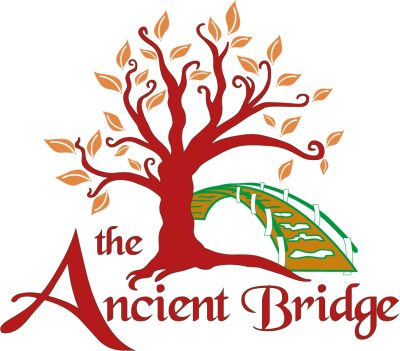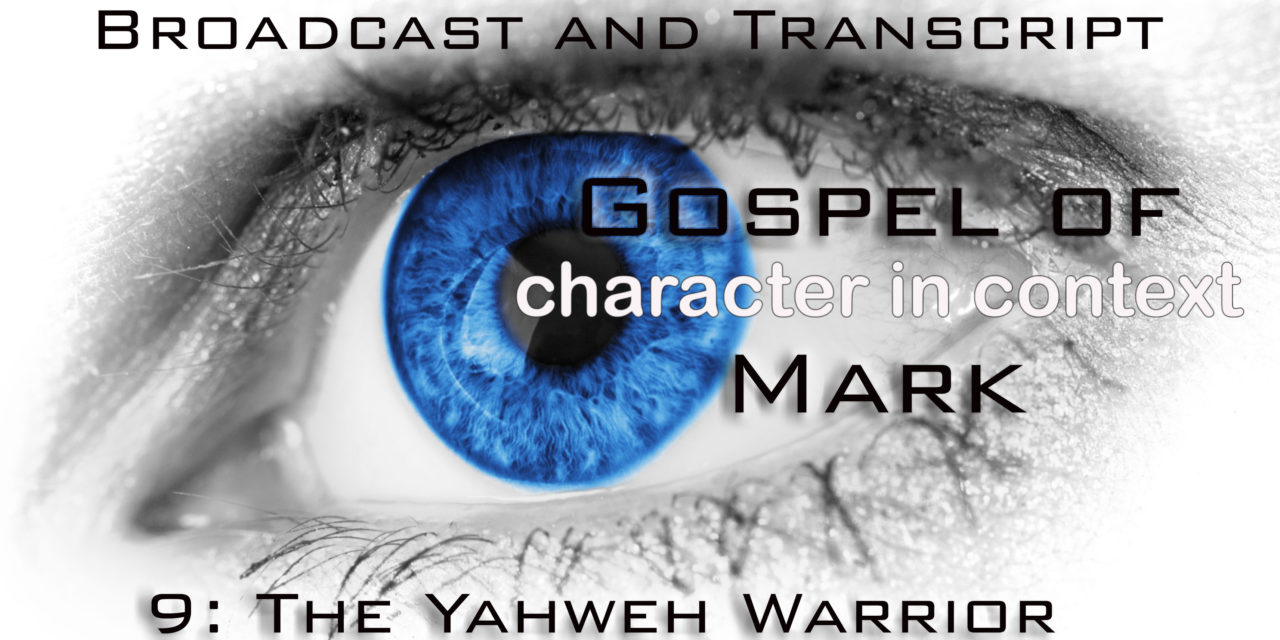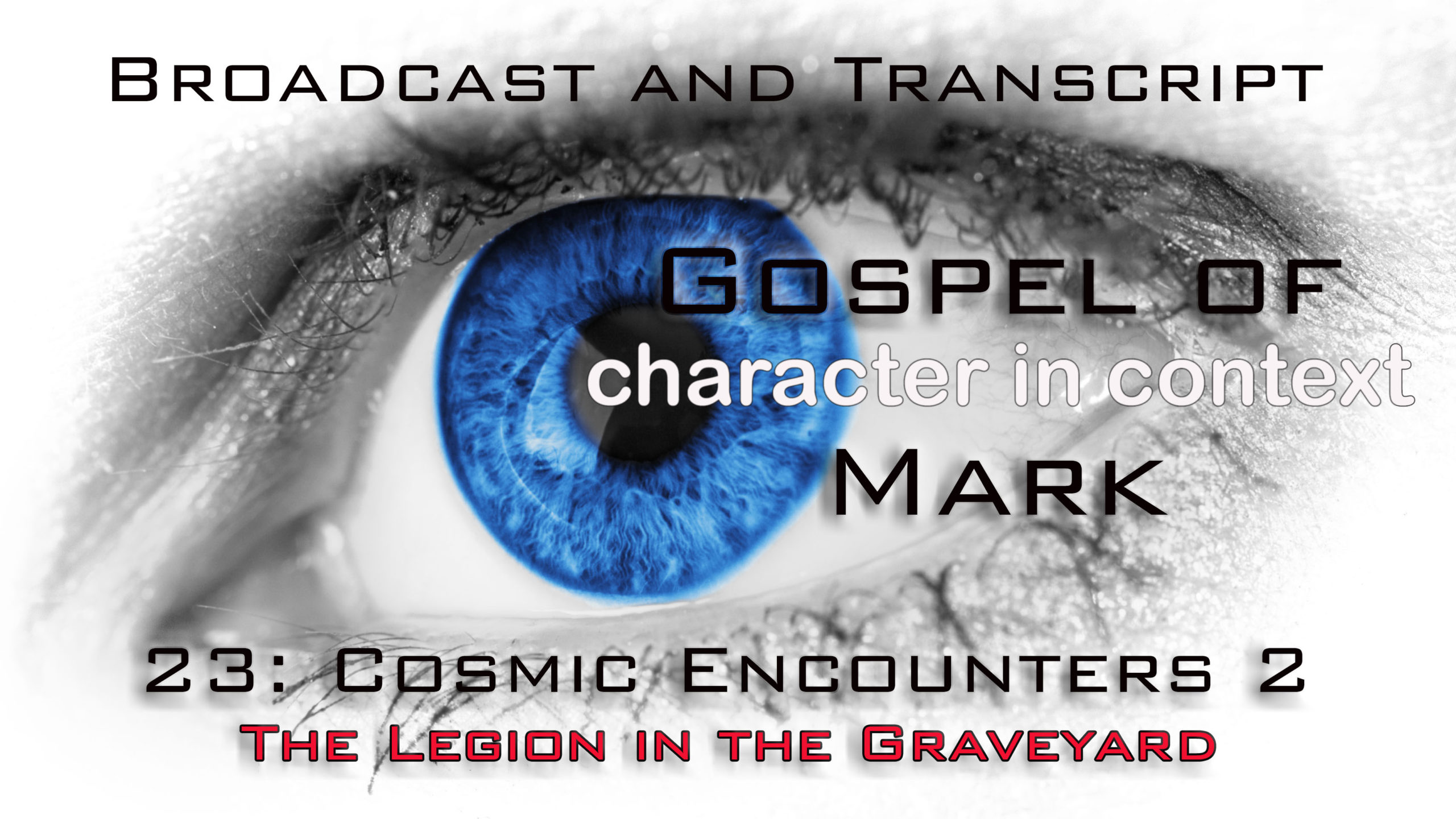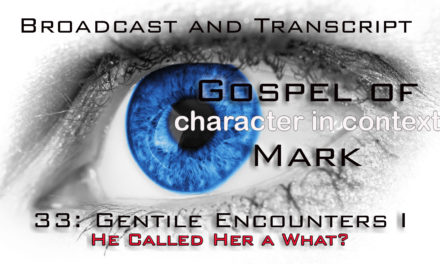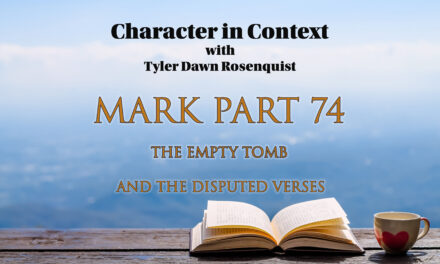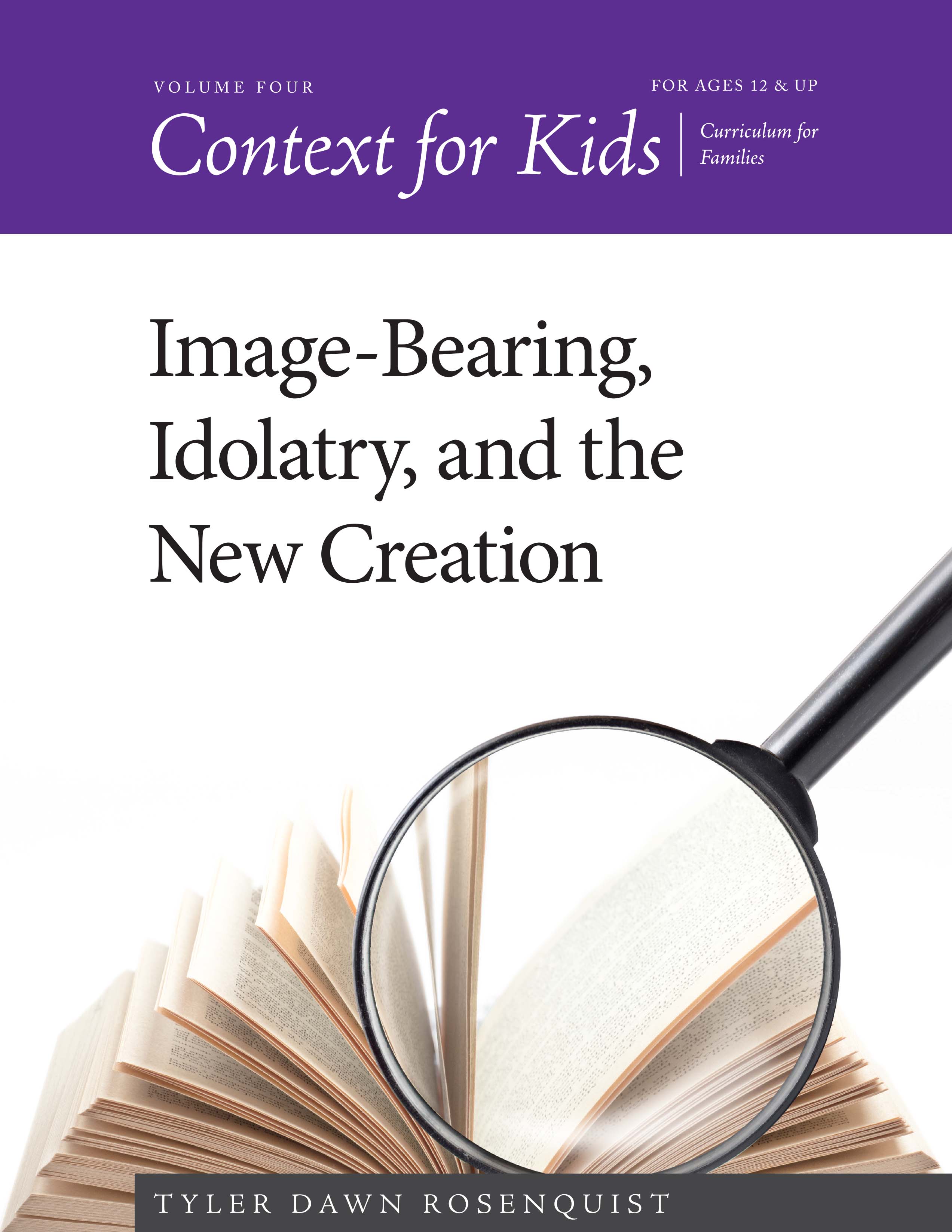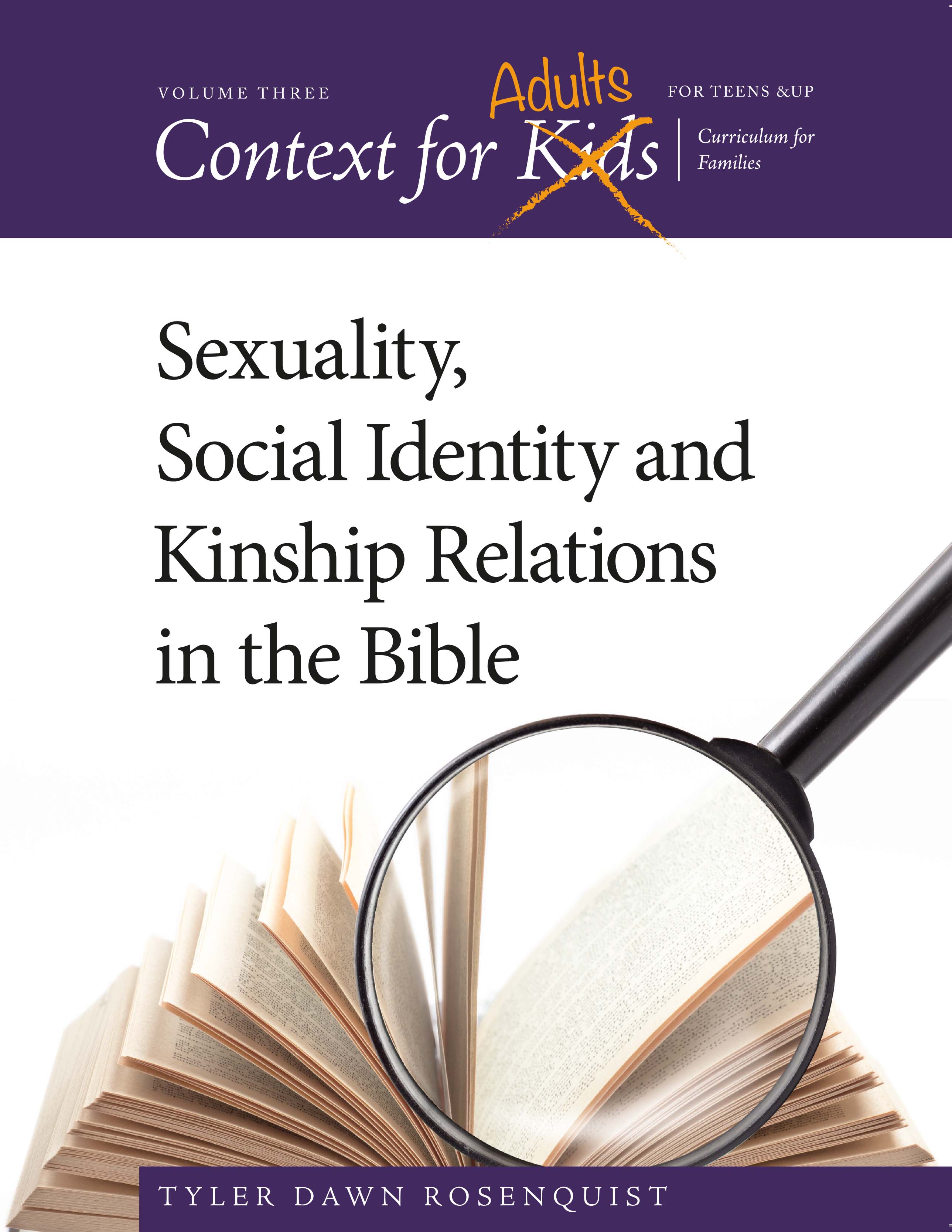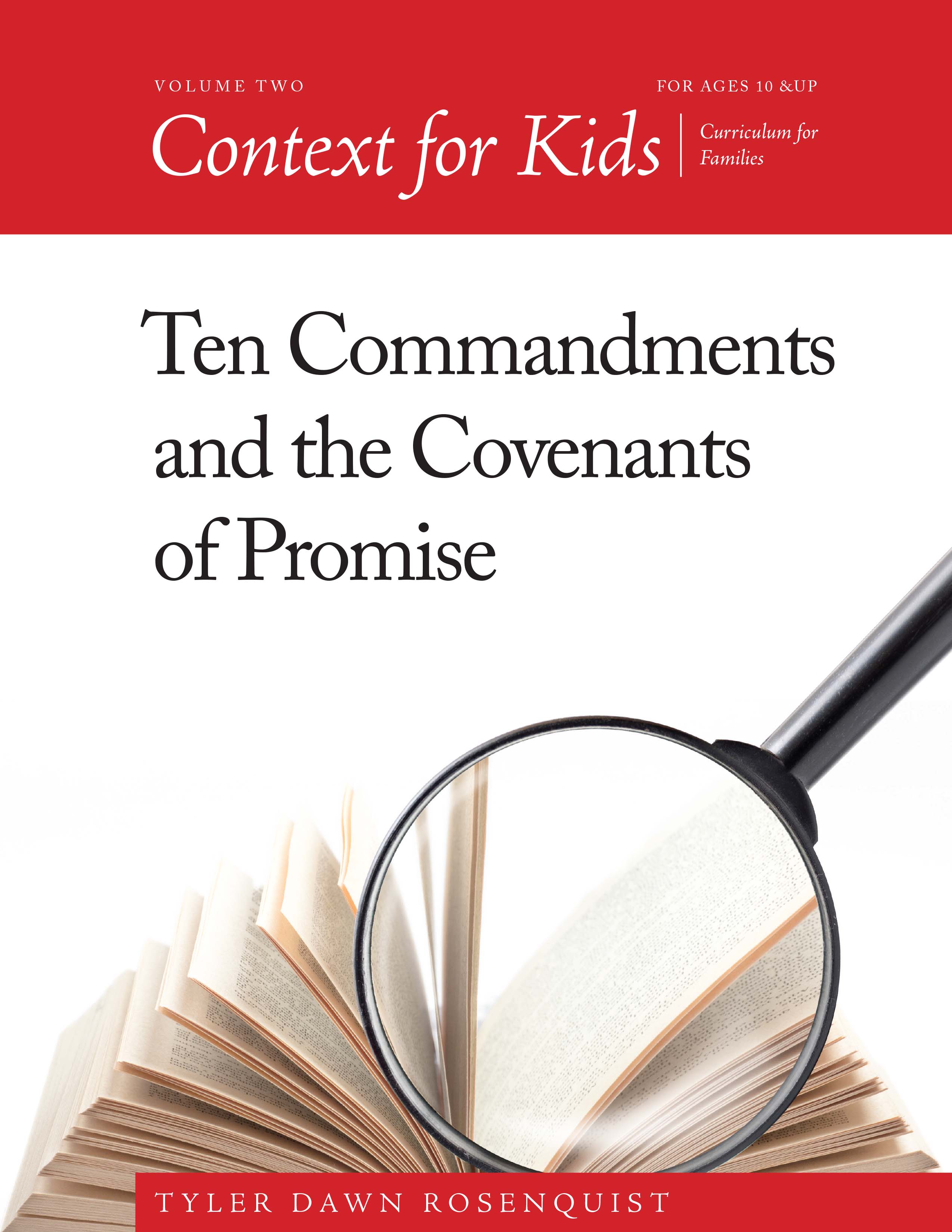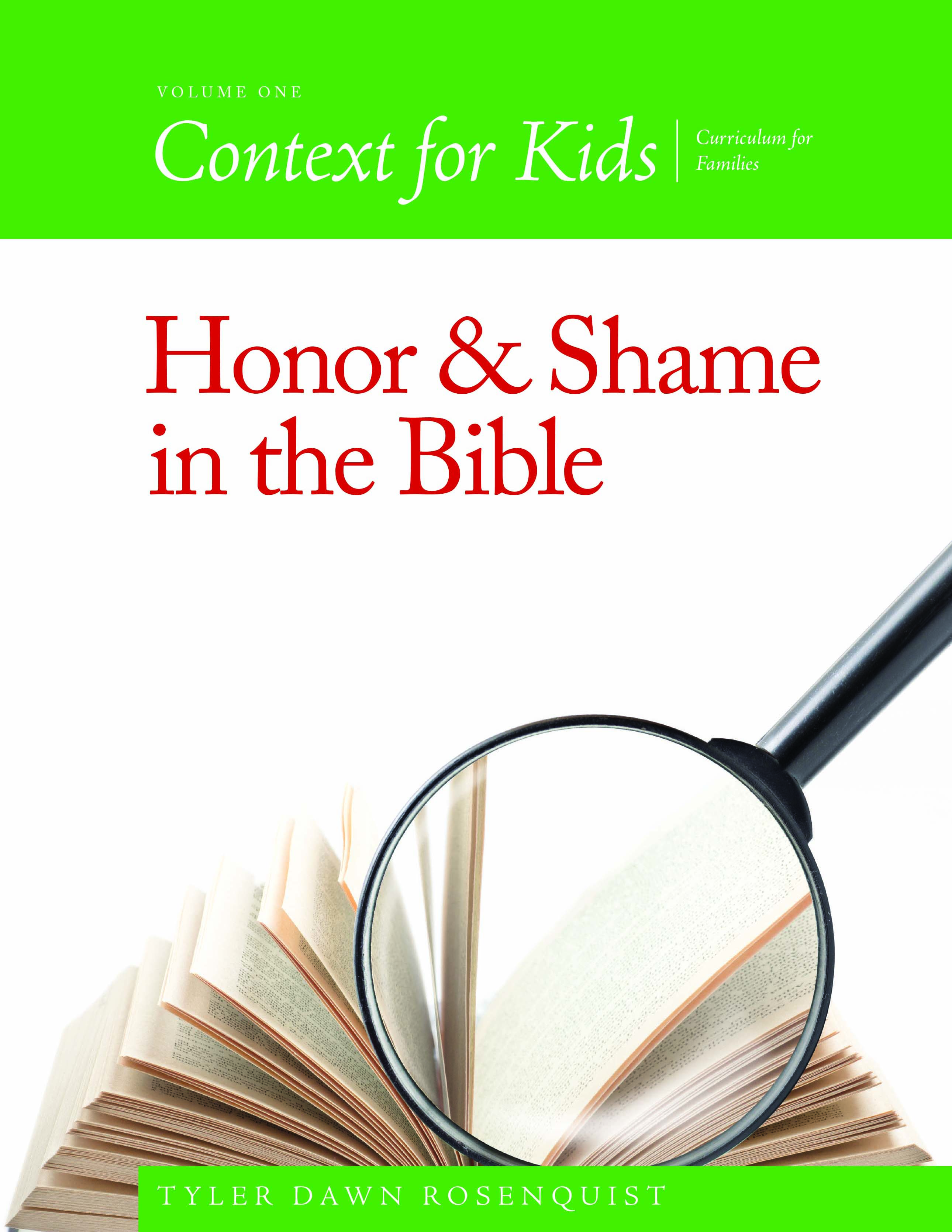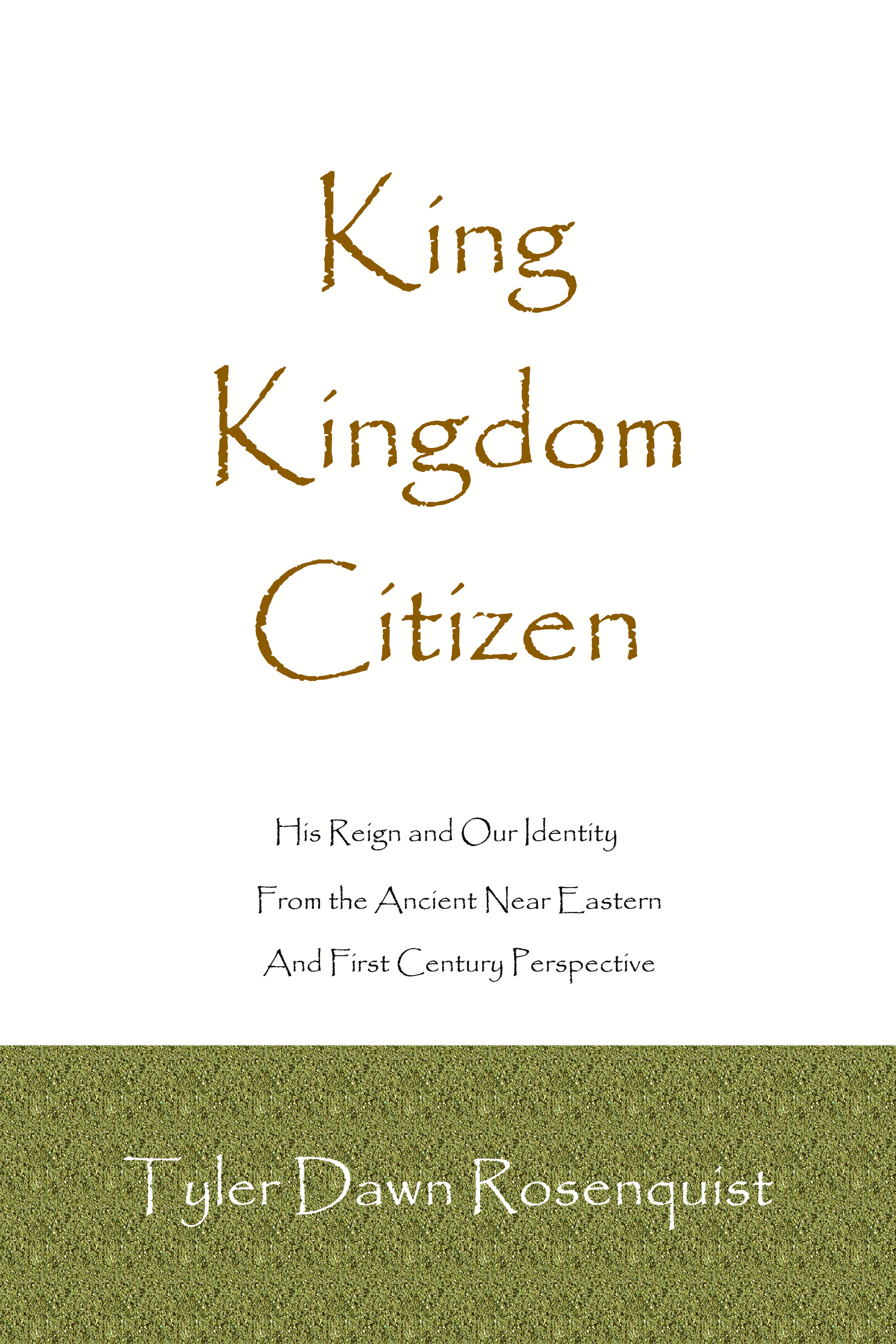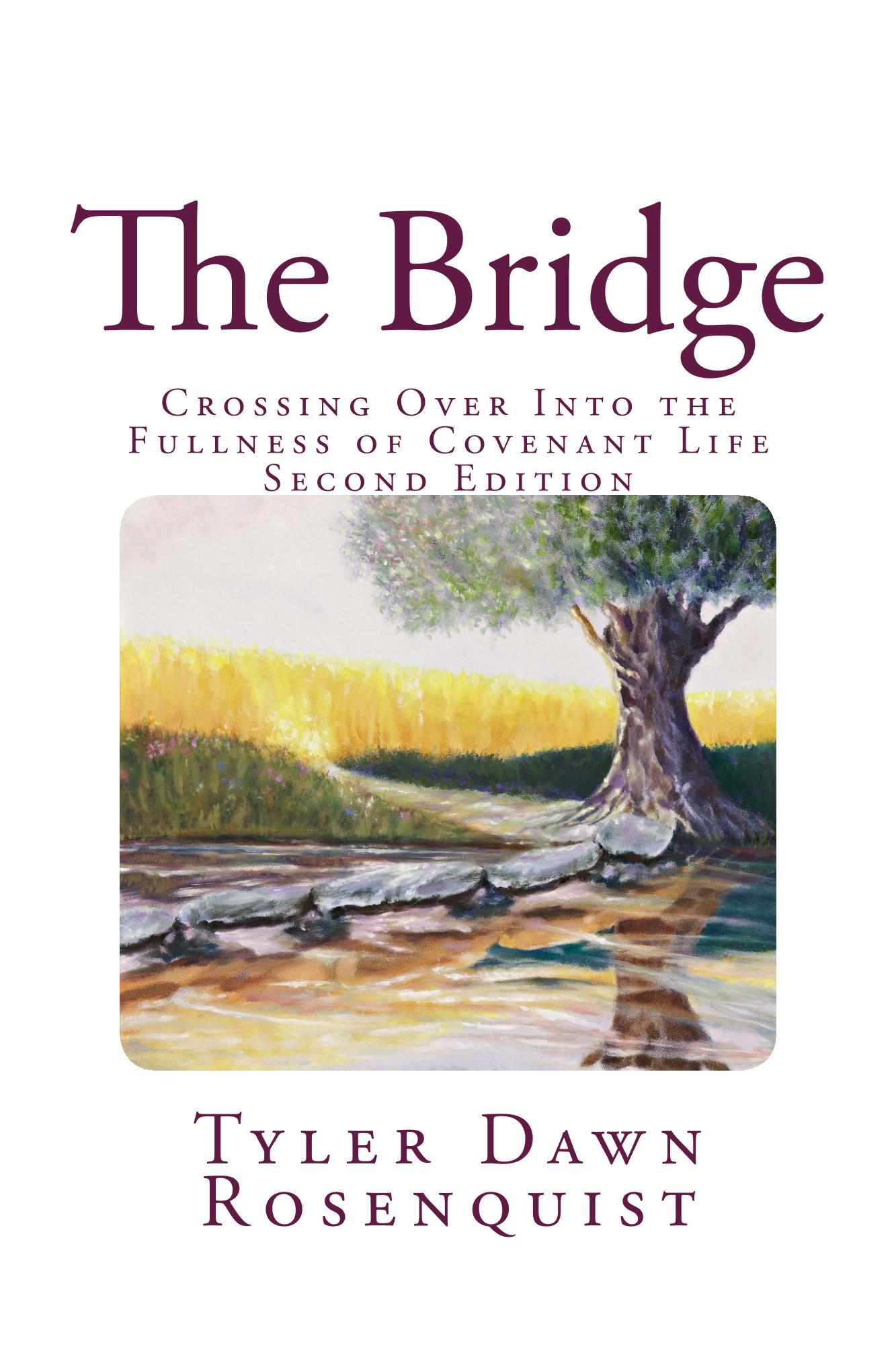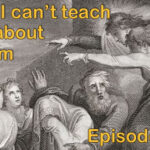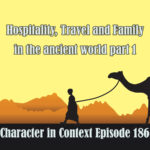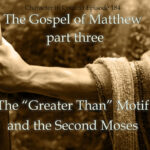So, we’ve finally reached the end of Mark chapter one and I wanted to cover in more depth a concept that I have only hinted at in the past–the Yahweh-Warrior motif of Isaiah and Mark. How on earth are we supposed to pull together all of the images in Scripture of Yahweh as the shepherd and warrior coming personally to save His people and gather in the nations? That’s exactly what Mark has been laying out the groundwork for in the first chapter of his Gospel. Exciting stuff!
We’re also going to look at pre-Christian Jewish pseudepigraphic writings about the priestly Messiah that bear some interesting similarities to Mark’s Gospel–along with some very notable differences.
Transcript below
****************
Today we’re going to explore a concept that I only hinted at in my Isaiah and the Messiah series and so far during the last eight weeks of the Gospel of Mark. This concept is the theme of the Yahweh Warrior, introduced in the Torah and the Prophets—most specifically in Isaiah 40-55, and the Greater Exodus in which He promises to liberate His people once more. Isaiah 40-55 talks quite a bit about the first Exodus of slaves out of Egypt (Israelite and mixed multitude), predicts the second mini-Exodus in which maybe 5% of Jews returned from Babylon (although they were all commanded to go), and points to a yet future massive exodus for all peoples, Jew and Gentile—hearkening back to the first Exodus. I only hinted at it before now, mentioning it in passing, because we really needed to see all of the material in Isaiah first and get one chapter of Mark under our belts before I could really show you how Mark paints Yeshua/Jesus as the human manifestation of the Yahweh Warrior destined to lead His people out of slavery to the ultimate Pharaoh of sin and death.
Hi, I am Tyler Dawn Rosenquist and welcome to Character in Context, where I teach the historical and ancient sociological context of Scripture with an eye to developing the character of the Messiah. If you prefer written material, I have five years’ worth of blog at theancientbridge.com as well as my six books available on amazon—including a four-volume curriculum series dedicated to teaching Scriptural context in a way that even kids can understand it, called Context for Kids—and I have two video channels on YouTube with free Bible teachings for both adults and kids. You can find the link for those on my website. Past broadcasts of this program can be found at characterincontext.podbean.com and transcripts can be had for most broadcasts at theancientbridge.com. My reading list for these studies can be found in the transcript for part two of this series on my blog.
Mark is my favorite Gospel. Yes, I am very much aware that I said that about Matthew when I was teaching that but it is probably safe to say that my favorite is whichever one I am currently learning new things about. It’s rather like running into someone who intimately knew a long lost loved one and having the privilege of hearing things about them you had never heard before—getting glimpses that stir up your love and your own fond memories once again as pieces are put into place that you didn’t even know were missing.
Mark is oftentimes mislabeled as a bare-bones Gospel, and in some ways it is true—he didn’t spend time on anything that wasn’t going to paint Yeshua as the divine Yahweh Warrior and the inaugurator of the Greater Exodus for His people. That’s why we find few sermons and some stripped-down parables—but a whole heck of a lot more focus on His actual deeds. Mark knew the importance of saying only what needed to be said in order to highlight the important narrative—Yeshua’s fulfillment of Isaiah’s Messianic prophecies, His position as the Greater Moses, as well as a Greater David, Elijah, and Elisha. No small accomplishment in sixteen short chapters.
Today I am going to be pulling from one particularly amazing book. It’s a scholarly book so not the easiest read but well worth the effort for anyone who wants to see the real context of the Isaianic New Exodus motif in the Gospel of Mark—which really sets aside some of the recent ideas about people driving on a land bridge across the ocean as we all (those of us with cars anyway) head to Israel. The book is by Rikk E. Watts and it is called Isaiah’s New Exodus in Mark and it is based on his Cambridge Ph.D. thesis back in 1990. He is also an aeronautic engineer who is very active on the subject of justice and righteousness, working with the poor. So, this guy is the real deal. Not only smart but doing the hard work of the Kingdom, which is meeting people’s real needs and not just providing brain fodder for us bookworms.
First of all, let’s look at some statistics about the Gospel of Mark because they will be very important as we go forward—and these are from Watts.
Twenty-seven percent of Mark, overall, concerns miracle accounts. That’s a huge number—but it’s about to get a whole lot bigger. When we subtract the Passion narrative, starting in chapter 11, that percentage goes up to forty percent. If we limit Mark’s Gospel to everything before Chapter 8:26, 47% of the accounts are specifically about miracles—healings, deliverance, signs, wonders, and feedings. That is very different from the other Synoptics and John, which largely focuses on His preaching. But the narrative demands this sort of treatment. The other Gospel writers focused on His teachings but Mark is interested in presenting Yeshua as the fulfillment of Isaiah’s (and Ezekiel and others’) promise of a Yahweh-Warrior, explaining how Isaiah’s confusing promises found their fulfillment in Yeshua as Yahweh’s divine agent of deliverance from slavery to the powers of sin and death.
In Isaiah, we have three separate Exodus accounts referenced. The first, of course, is hearkening back to the exodus out of Egypt, and second is to Yahweh’s deliverance of a small remnant of His people (scholars suggest about 5%) out of Babylon and back to the Land (despite the fact that all were commanded to return—hence the warning, “There is no peace,” says the Lord, “for the wicked” in Isaiah 48:22 and repeated almost verbatim in Isaiah 57:21. This Exodus was led by the agent Cyrus the Great and was rejected by most of the exiles who preferred to stay where they were. As I mentioned in Isaiah and the Messiah, Babylon was a very comfortable place to be and Jerusalem most certainly was not. It had to be rebuilt. Businesses had to be abandoned in order to make the journey—they had a lot to lose in following Yahweh in His command to return. But a third exodus was also there—an exodus that had unique promises unfulfilled and sounding like empty metaphor if it was assumed they were discussing the mini-Exodus of Haggai, Zerubbabel, and those first faithful returnees. The Holy Spirit had not fallen on their descendants! There was no massive return! The nations didn’t follow suit and join themselves with the God of Israel! Where was the Arm of the Lord whom the Qumran covenanters described as the Messiah in 1QISa—the Great Isaiah Scroll? What they were promised was a glorious and triumphant return. What they got was a lot of grief for the small and faithful few who returned.
The Isaianic Exodus was led by a surprising agent of Yahweh—pagan Cyrus the Great. He signed a decree allowing the Jews to return to their homeland and rebuild their Temple. Historically, this was unprecedented. They had ceased to be a people with a homeland and that’s what exile was about—destroying what was and making the exiles into Babylonians. But Cyrus the Persian told them to go be Jews again in their own land and with their own God and even to sacrifice and pray for him at the Temple of their God. But like I said, they overwhelmingly refused to return. They simply had too much to lose by staying and too much to risk (even their lives) by going.
Which leads us to the third and future Exodus promised by Isaiah, led by the Yahweh-Warrior, and of course, we also have four lengthy references to a Servant who would give all for Israel—and not only for Israel because that was deemed by Yahweh to not be enough, but for the nations as well. If you want all of this covered in detail, you can find this series in audio on my podcast channel or in transcript form on my website.
What I didn’t cover in that series are some verses from Isaiah 59 and 63 so let’s look at those—because the Jews in the first century had to wrestle with these and before they are fulfilled it is very much an unsolvable puzzle. Remember that predictive prophecy isn’t given so that we can figure out the future—that just never works—it is given so that, after it is fulfilled, we can look at it and marvel that God gave that prediction long before it happened and we can give Him credit for being the author of history and not at the mercy of it like the gods of all the other nations. God gets credit, in predictive prophecy, for calling it before it happens. It’s all 100% about Him. It isn’t about clever scholars or about people watching the news enough, it is about proving that He is the author of everything from beginning to end. That we don’t treat it that way is unfortunate but many people have led countless others astray by trying to be clever—and no matter how many times they get it wrong we just keep listening because it’s ear-tickling and interesting and we are way too easily bored nowadays. Scripture is cool, people, every word of it. We just have to stop demanding that it meet our modern standards for what constitutes entertainment. Anyway, here’s Isaiah 59:15-20:
15 Truth is lacking, and he who departs from evil makes himself a prey. The Lord saw it, and it displeased him that there was no justice. 16 He saw that there was no man, and wondered that there was no one to intercede; then his own arm brought him salvation, and his righteousness upheld him. 17 He put on righteousness as a breastplate, and a helmet of salvation on his head; he put on garments of vengeance for clothing, and wrapped himself in zeal as a cloak. 18 According to their deeds, so will he repay, wrath to his adversaries, repayment to his enemies; to the coastlands he will render repayment. 19 So they shall fear the name of the Lord from the west, and his glory from the rising of the sun; for he will come like a rushing stream, which the wind of the Lord drives. 20 “And a Redeemer will come to Zion, to those in Jacob who turn from transgression,” declares the Lord.
And Isaiah 63:5:
5 I looked, but there was no one to help; I was appalled, but there was no one to uphold; so my own arm brought me salvation, and my wrath upheld me.
Hopefully, you remember Isaiah 51, 52, and 53 where the Arm of the Lord is mentioned. In Isaiah 51:9, the phrase is practically thrown in Yahweh’s face as a challenge to be mighty…again…as though Babylon had truly defeated Him. But the arm that gets revealed in 52 and 53 is that of the Servant who saves by enduring wrath, not by dishing it out. So we have this strange and uneven and confusing account of this agent of Yahweh, the Arm of the Lord—totally being portrayed in an anthropomorphic way, as a man doing what men can do. This Arm of the Lord is responding to oppression, a lack of justice—bringing salvation to those who turn from their sins but making sure that those who don’t are punished. And yet, at the same time, it appears as though this is Yahweh Himself as this mighty warrior acting as a human in earthly affairs. But, remember, we know the way this turns out—they didn’t. They are having to make sense of what B. B. Warfield calls a magnificently furnished room that is poorly lit. When Yeshua comes and provides the light of revelation, he adds nothing to the room—He merely illuminates what was always there. I love that. Brilliant analogy. This is really not so different as having to try and read the Gospels from the point of view of the disciples who do not know what we know—because they have no narrator to fill them in on the big secret.
But they oftentimes saw these seemingly conflicting passages—the Yahweh Warrior inflicting damage on His enemies and providing justice for His people and could not reconcile them with a Servant who would bring the Nations into the fold. Sometimes they decided that it was an either/or. If they were deserving then this would happen and if they were undeserving then that would happen. Most sectarian writings seem to support the idea that there was little interest in the nations coming to Yahweh except after being subjugated militarily—and verses can definitely be read in that way if we ignore other verses. But, they were forgetting an important aspect of the Isaianic mini-Exodus out of Babylon. Namely, they were forgetting that the first thing that happened before their deliverance was that they were all forgiven for their sins when they were still totally unrepentant—starting in Is 40:2 and continuing as a theme throughout chapters 40-55. We see the generosity in forgiving for His own Name’s sake so that He will have a people and a witness in the earth. He did not wait for them to repent before wiping their slate clean for the sins that got them exiled in the first place. It is a testament to His love and mercy that He is capable of doing this—forgiving those who see no need to be forgiven and who, in fact, are vociferously telling Him they have been wronged by Yahweh! Now if that ain’t chutzpah, I just don’t know what qualifies. Although, as I often say, we aren’t really any different.
How does Mark reconcile the image of a vengeful Yahweh Warrior who vanquishes His enemies with the Suffering Servant of Isaiah 42, 49, 51, and 53? Exactly how we’ve been seeing it play out over the last six weeks and will continue throughout his Gospel—with the proclamation that the Messiah came to save men and destroy the forces of the enemy. Destroying sickness. Casting out demons. Feeding the hungry. Giving dignity to the downtrodden. There’s the salvation of people by identifying and vanquishing the true enemy. Jews in the first century wanted the Romans punished and conquered. Yahweh said, “That’s just small potatoes—let me at the forces behind those Romans and you will see true deliverance and the Romans will actually come to me in repentance.” That’s how the accounts are reconciled but who could see if before Yeshua came and conquered sin and death through the offering up of Himself on the Cross? No one. No one was wise enough or smart enough or spiritual enough to see it because it isn’t about human worth or effort. It’s about needing God’s light—and as John pointed out:
4 In him was life, and the life was the light of men. 5 The light shines in the darkness, and the darkness has not overcome it. (John 1:4-5)
Because we have the light now, we see it. We see how Yeshua is the fulfillment and how His ministry is the answer to the mystery of Isaiah and the prophets. How can we respond with anything other than just absolutely marveling at God’s beautiful and intricate designs—in some way as plain as day and in other ways an unsolvable puzzle? You know, we love to think that we are very clever but we aren’t and not even the smartest of us, not compared to God. It’s that gorgeous room full of exquisite furnishings that we were squinting to see and made all the wrong guesses because when we lack the light of revelation, we’re going to make some pretty pathetic judgments about what is there. And we can’t help it, all we can do is be humble and open to His unfolding revelation. It ain’t over until it’s over.
In the coming weeks and months, we’re going to see this battle change dramatically. Up until now, Yeshua has fought nothing except human misery and the demonic elements. First, He cast the demon out of that man in the synagogue. Second, He healed Peter’s mother in law of whatever was causing her fever. Third, he healed and delivered just about everyone in Capernaum. Fourth, He cleansed a leper—something only God ever does in Scripture. But as we start into Mark 2 next time, we will see that word has gotten out and Yeshua isn’t just dealing with ordinary people anymore, He will be confronted by first, the Scribes, and second, the Scribes of the Pharisees, and then the Pharisees. Later on, He will butt heads with the wicked Sadducean chief priests, who will conspire to kill Him (as opposed to the thousands rank and file priests, a great many of whom (probably the majority of whom) were good and righteous men).
It’s going to get ugly and battle lines are going to be drawn. As I have mentioned previously, this preaching and these miracles have the effect of demanding a decision for or against Yeshua. You can’t watch Him heal the sick and work mighty miracles, even bringing people back from the dead, healing the blind from birth and cleansing lepers—well, you can’t watch that and refuse to make a decision. People are going to either end up being for Him or against Him and that is the name of the game here. Salvation is often made to be this complicated thing but it is entirely an allegiance thing. Who are you going to ally yourself with and be loyal to? Is it going to be the works of God as evidenced through Yeshua or is it going to be with the powers that be—and that can be religious authorities like the Sadducees, or the Pharisees who ended up opposing Him, or secular powers like the Herodians who were loyal to Rome and the Roman appointed rulers, being more Greco-Roman than Jewish. When we get to the book of Acts someday, because I know I go slow but I don’t like skimming over anything, we will find that as many as one in five Jews throughout the Roman Empire decided to align themselves with Yeshua. That’s astounding. That’s a huge number. So much for the myth of the Jews rejecting their Messiah, eh?
Now, I know I said that the Jews were looking for someone to conquer the Romans and that is true, but it isn’t the whole story. And, of course, I like to point out that the Qumran Covenanters not only wanted the Romans destroyed but also the Pharisees and Sadducees as well—everyone except them in their little enclaves, actually. But we’re going to be getting into some themes in a couple of weeks that find some very interesting parallels in the Pseudepigraphic and sectarian writings.
In Mark 3, and we will talk about this again when it comes up, we’re going to see this cosmic battle of the Yahweh Warrior vs the demonic forces play out on a much grander scale but let’s look at the Testaments of Levi and Zebulun and this is out of The Old Testament Pseudepigrapha, Vol 1 by James H. Charlesworth. These were written sometime after the Septuagint and sometime before the Maccabean Revolt in the 160’s BCE. However, there is a dispute that at least one of them could have been written closer to 100 BCE. Truth is, we can’t possibly know for sure without a time machine.
This is from the Testament of Levi, which can be found on pg 794, about their Messianic expectations:
When vengeance will have come upon them from the Lord, the priesthood will lapse. And then the Lord will raise up a new priest to whom all the words of the Lord will be revealed. He shall effect the judgment of truth over the earth for many days. And his star shall rise in heaven like a king; kindling the light of knowledge as day is illumined by the sun. And he shall be extolled by the whole inhabited world. This one will shine forth like the sun in the earth; he shall take away all darkness from under heaven, and there shall be peace in all the earth. The heavens shall greatly rejoice in his days and the earth shall be glad; the clouds will be filled with joy and the knowledge of the Lord will be poured out on the earth like the water of the seas. And the angels of glory of the Lord’s presence will be made glad by him. The heavens will be opened and from the temple of glory sanctification will come down upon him, and a fatherly voice, as from Abraham to Isaac. And the glory of the Most High shall burst firth upon him. And the spirit of understanding and sanctification shall rest upon him (in the water—later Christian addition). For he shall give the majesty of the Lord to those who are his sons in truth forever. And there shall be no successor for him from generation to generation forever. And in his priesthood the nations shall be multiplied in knowledge on the earth, and they shall be illumined by the grace of the Lord, and Israel shall be diminished by her ignorance and darkened by her grief. In his priesthood, sin shall cease and lawless men shall rest from their evil deeds and righteous men shall find their rest in him. And he shall open the gates of paradise; he shall remove the sword that has threatened since Adam and he will grant to the saints to eat of the tree of life. The spirit of holiness shall be upon them. And Beliar shall be bound by him. And he shall grant to his children the authority to trample on wicked spirits. And the Lord will rejoice in his children; he will be well pleased by his beloved ones forever. Then Abraham, Isaac and Jacob will rejoice, and I shall be glad, and all the saints shall be clothed with righteousness.
Okay, this translation is by the late great H C Kee (the Charlesworth book contains a collection of other scholar’s translations) and I know what you’re thinking—no way was this not written by Christians. Although later date copies have that “in the water” addition, wanting to link it more to Yeshua, we have a lot of fragments of this in Hebrew and Aramaic dating back before Christian times. It looks shockingly close to what Mark and others are saying but there are also some marked differences (pun not intended). This is a document glorifying a priestly figure—remember, it is the Testament of Levi, after all, and priests were all they had in those days. The church and state were really united as there was no monarchy until the times after the Maccabean Revolt and even then there were no actual priest-kings until two generations later with the grandsons and great-grandsons of Simon duking it out. So, there was a huge focus on priests—they were the elites. You couldn’t swing a dead cat without hitting another of the probably thousands of descendants of the kingly line but it wasn’t as though any of them had a claim to the throne. That was going to take an act of God but what you could look to were Zadokian priests and of course the Qumran community felt that their priests were the legitimate priestly line. But I don’t want you to think these came out of Qumran because they probably did not, due to reasons we can’t really explore here. Perhaps Egyptian or Syrian Jews, but this is a Jewish document, written at least one hundred and more likely two hundred years before the birth of Yeshua the Messiah. I shared it to show you how Jews were thinking at this time about eschatological things and eschatological figures, the word eschatological meaning “pertaining to the last days” and they figured they were living in those times, just like we do—which is rather sobering, right? Every generation for over 2000 years now has been convinced that they were THE generation. Probably a good idea to live as though the world still needs to be evangelized and that the end is nowhere in sight—perhaps we would do more good that way.
So there is a statement in there “And Beliar shall be bound by him.” This was an expectation of this “end of days” figure—that he would be able to do battle with, defeat and bind the spirits of Beliar, also referred to in other writings as Belial, with which you are undoubtedly more familiar as it is listed in 2 Corinth 6:15: What accord has Christ with Belial? Or what portion does a believer share with an unbeliever? But in the Hebrew Scriptures, it is often hidden by being translated as “worthless” or “wicked.” The King James version, however, doesn’t translate the word at all but leaves it as is. So if you want to see where it pops up, go to BibleGateway.com and do a search for Belial in the KJV. I think it pops up like fifteen times. Sons of Belial refers to wicked men, and so Belial would be their father, namely the evil one. The Testament of Levi refers to this evil one, Beliar, being bound by this end-times figure, which is exactly what we will see in Mark three when we get there and I will refer back to this when that happens. Let’s quickly just look at one verse from the Testament of Zebulun 9:8, also in the same source by the same translator pg. 807:
And thereafter the Lord himself will rise upon you, the light of righteousness with healing and compassion in his wings. He will liberate every captive of the sons of of men from beliar, and every spirit of error will be trampled down. He will turn all nations to being zealous for him. And you shall see [God in human form—later Christian addition], he who the Lord will choose: Jerusalem is his name.
Gotta really love those early Christian commentators who wanted to hit us over the head with a baseball bat instead of just allowing us to read the document as-is. And of course, editing was not necessary (and they also did it with Josephus, thankfully Arabic copies have been found without the later additions) because this wasn’t even Scripture anyway. These are both opinion pieces of writers who were looking at what the Scripture said and trying to make sense of the diverse predictions and references. We do the same. But, you know, it’s utterly fascinating reading about how divided the Jews were already becoming, before the revolt and the disastrous reign of the Hasmonean Priest-Kings. No wonder things had become so gratuitously hateful (to steal a line from the Talmud) in the first century. This didn’t happen overnight, factionalism had deep roots and there were Jews who were only too happy to think about other Jews being counted among the wicked during Hellenistic and later Greco-Roman times. Sound like anybody you know today? Yeah, been there and done that myself.
The Melchizedek scroll also references the freeing of the sons of men by Belial and his spirits by the eschatological Melchizedek but I already read that to you a while back. But in all of these documents, Watts points out a fourfold theme (1) there are exiles/captives suffering under the power of Satan, (2) there comes a deliverance by a mighty warrior from Yahweh, (3) there is a lot of Kingdom of God imagery, and (4) the writings are all obviously deeply influenced by Isaiah.
Let’s see what other examples I have—in the War Scroll 1QM, the Yahweh Warrior is presented as a deliverer, although not from demons but enemies that seem very human.
So, the first century Jews would have been familiar with this literature and these expectations, the various theories and all that. They were expecting a mighty warrior like David or Saul or even John Hyrcanus. Because throughout the Bible, Yahweh almost always works through human agents. He saved two/seven of each kind through Noah. He saved the children of Jacob through Joseph and then their children’s children through Moses. Then Joshua and Caleb, and after them, the Judges. The Kings were His next line of Saviors and when they ultimately and catastrophically failed, He sent the prophets to tell them about a future Savior who would be all these strange things and need to meet all these odd and seemingly conflicting requirements. The intertestamental writings are so often an attempt to make sense of it all. Sometimes they were really successful and sometimes they are downright scary. But they all have one thing in common—they were written before the light was applied to our gorgeously decorated and luxurious room. I truly admire the minds that came up with a lot of this stuff and it was actually expensive for them to write it down. Not like me. Great googly moogly I can spout nonsense all day and the ink is free because it is all digital!
But as I was saying, Yahweh has always worked through human agents but what did every single one of them do? They failed! Adam and Eve rebelled. Abraham looked for the easy way out. Joseph was an arrogant little snot. Moses had a temper (that was much harder provoked than mine let me tell you—I would have let them all die after the Golden Calf incident, or long before), Joshua was too quick to believe strangers, Saul was weak, murderous and jealous, David (well, let’s keep this episode G-rated), Solomon (again, let’s keep this G-rated), Hezekiah was a show-off, etc. etc. They all failed for the exact reason that we all fail—they were humans. The Yahweh Warrior promised and predicted by so many other writers had to be perfect. The perfect Israelite, genetically and spiritually, and in every single way. He couldn’t come in from the outside because that certainly wouldn’t have been any better. He had to be a true son of Abraham, THE true son of Abraham. He had to be not just a human conqueror because they are contaminated by war, for lack of a better way of putting it. David couldn’t build the Temple because of warfare. A man of peace had to build it. In the same way, a warrior could not gather the nations and rebuild David’s fallen tabernacle—it had to be a man of peace.
Every single man and woman sent by Yahweh was flawed, and so the only solution was to send an extension of His own perfection—His own Son. Only the Son could be trusted with that kind of power and authority in the midst of trials and tribulations. A human will become compromised. A mere human will take shortcuts and find a different way, an easier way. That’s what we do but that’s not what Yeshua did. The perfect man. The perfect Jew. The perfect Israelite. The Yahweh Warrior leading that Greater Exodus out of sin and death and into the Kingdom of Heaven on earth.
And He was presented to them as a result of their prayers, as an answer to prayer. They had been praying for a deliverer, for a warrior to lead them into victory and freedom. God gives us what we need, in the exact way that we need it, which doesn’t always correlate well to what we want to get.
